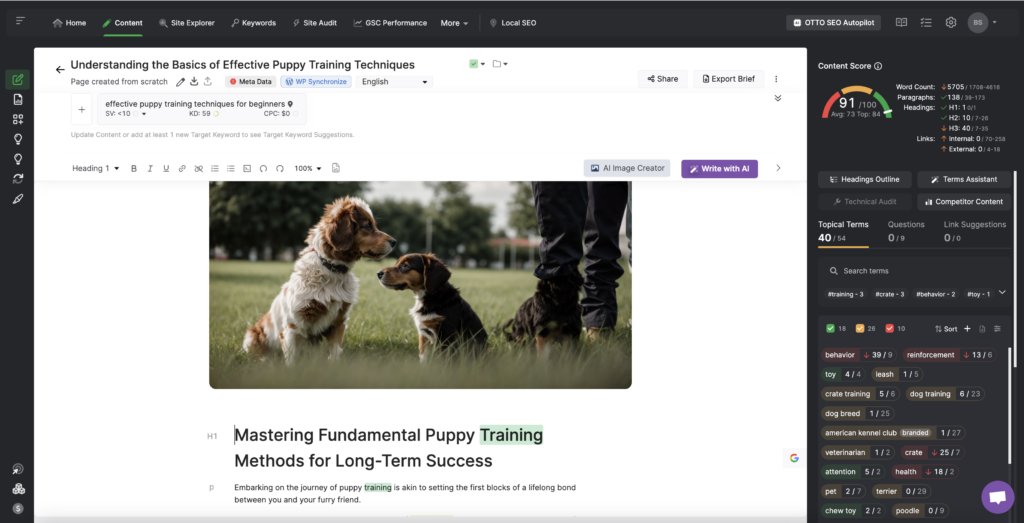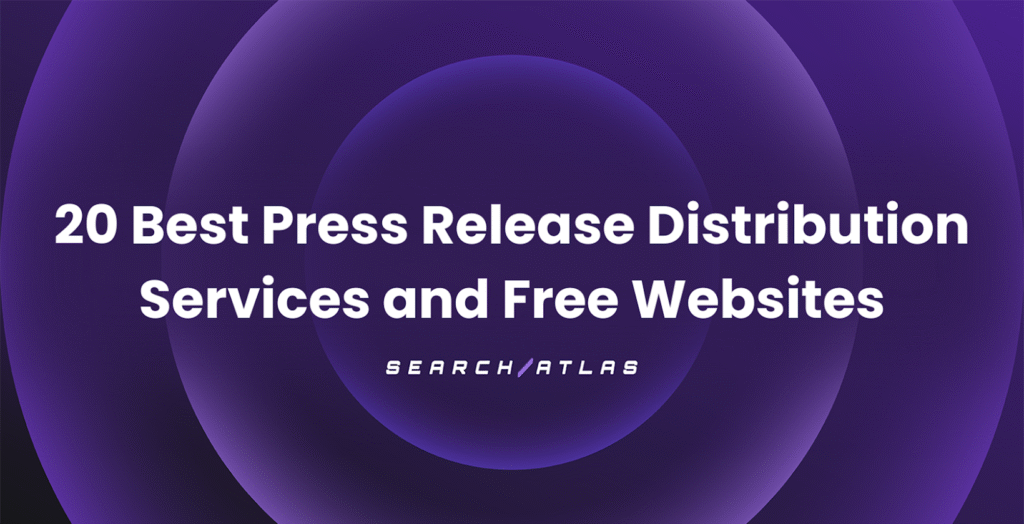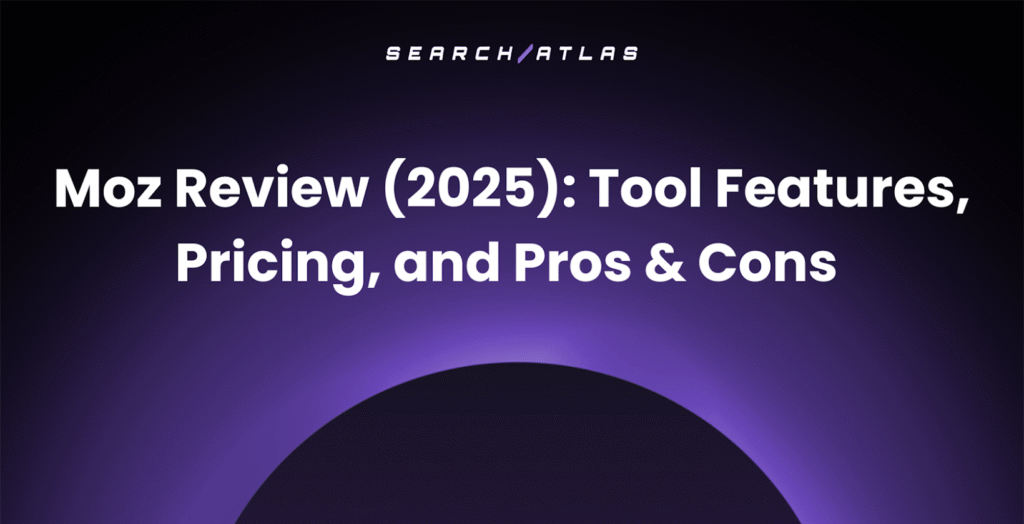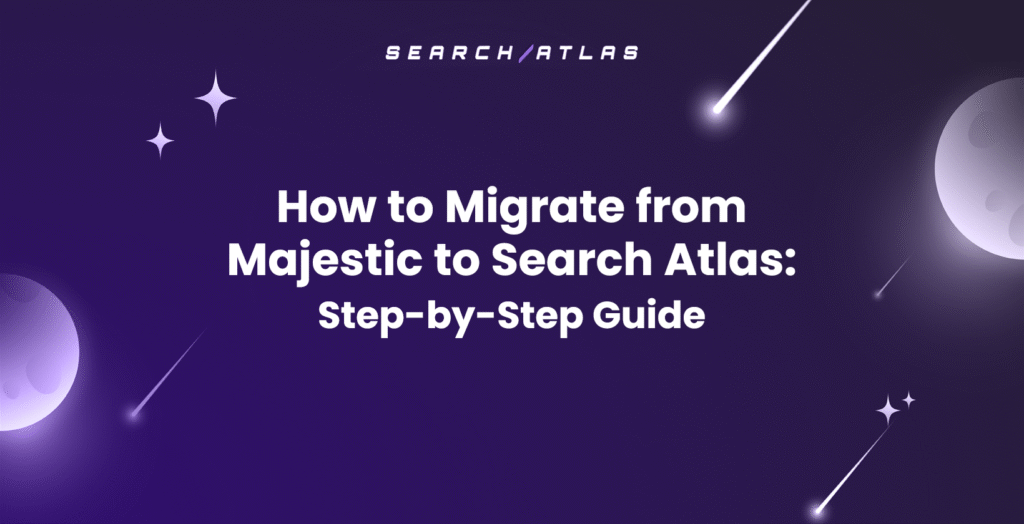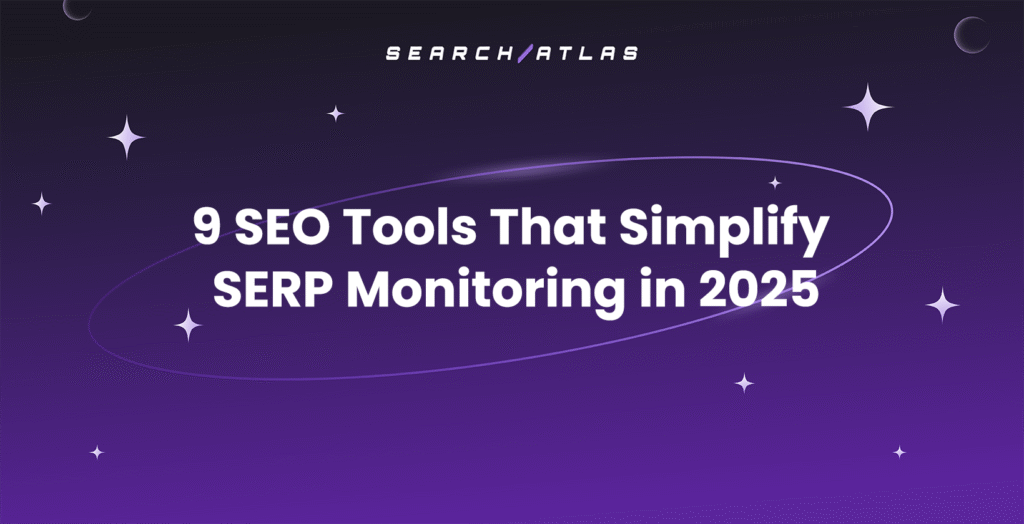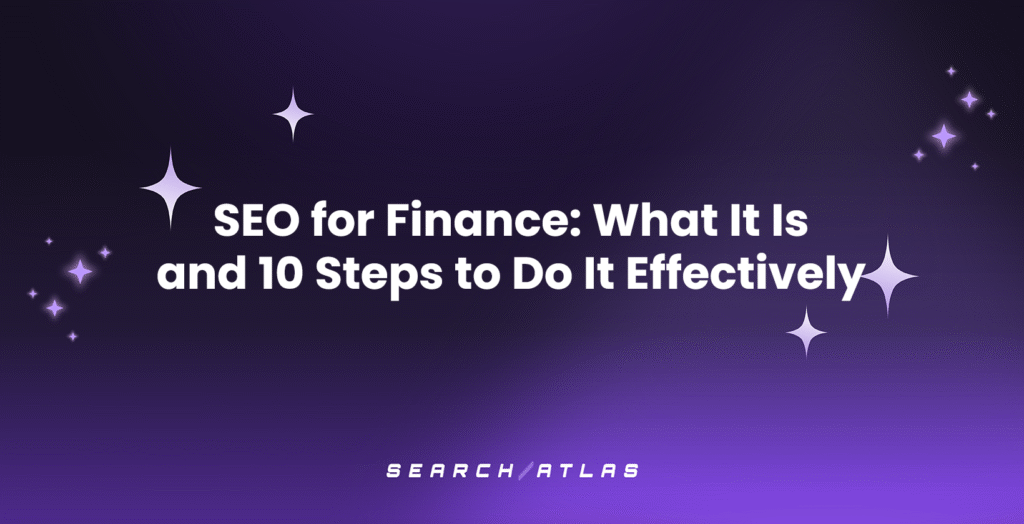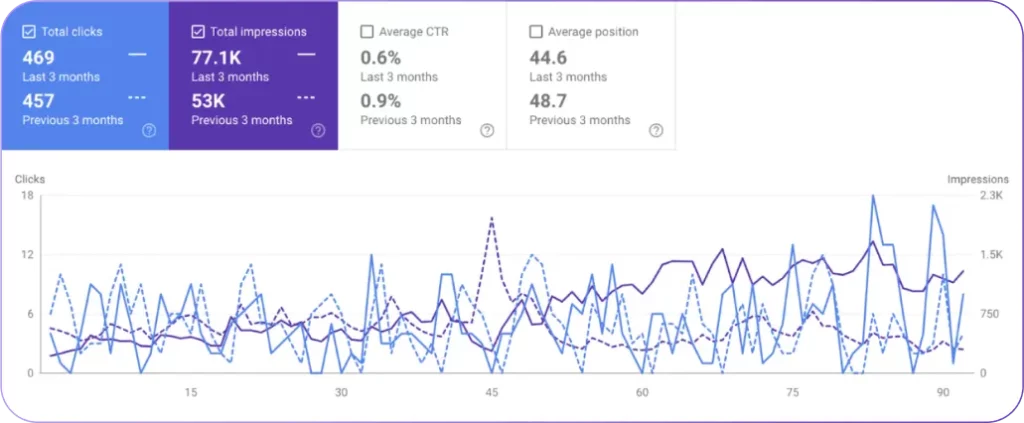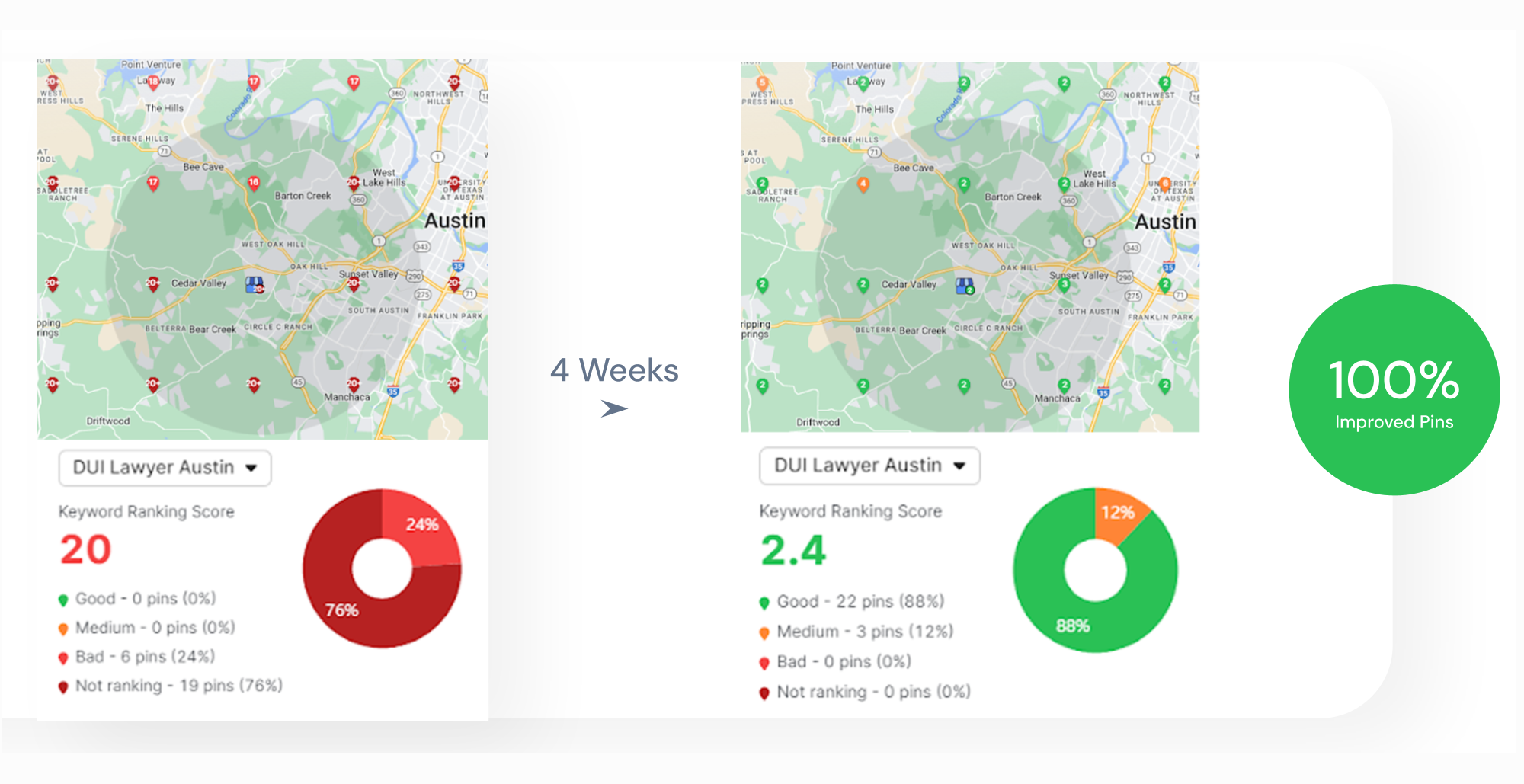Are you overwhelmed by the sheer number of SEO tasks, from optimizing content to generating sitemaps, and implementing them on WordPress? 😵
The right WordPress SEO tools can change your life. These plugins don’t just support you in optimizing your content; they help you streamline everything from generating schemas to publishing content.
But with so many options, how do you know which ones actually work?
This choice requires careful consideration. You need features that suit your site’s needs, are easy to use, address SEO user experience, and integrate seamlessly with your setup. 💻
In this post, we’ve done the legwork for you. We’ll dive into the 10 best WordPress SEO plugins and tools for 2025 to compare features, limitations, pricing, and more!

What to Consider With WordPress SEO Tools
If you’ve searched for SEO plugins in the WordPress Plugin Library, you might’ve noticed how the market is flooded with WordPress SEO tools. Unfortunately, many are outdated, incomplete, or simply don’t deliver results.
So, how do you know which one is ideal for you? The first factor to consider is whether the plugin simplifies your work. 😮💨
SEO is already a challenging field, and your tools should ease the burden. Look for features that automate repetitive tasks or streamline processes to save you both time and money.
Next, ensure the plugin integrates seamlessly with your main SEO tools. For instance, if you use an SEO platform to draft content but then manually copy and paste it into WordPress, you’re wasting valuable time. The right plugin should enable smooth workflows, allowing you to write and publish killer content with minimal friction or even in 1-click. 🖱️
Finally, evaluate the cost-effectiveness of the paid version. While free versions can be helpful, they often lack the advanced features necessary for significant impact.
If you’re serious about scaling your site, assess whether the full version’s benefits align with your goals and justify its price.
10 WordPress SEO Tools and Plugins to Make Your Life Easier
We’re not just listing the most popular WordPress SEO tools but those designed to streamline your workflow. Curious about how they simplify tasks and their limitations? We’ve got you covered with detailed insights right here.
1. Search Atlas SEO – Best WordPress Plugin for SEO & AI
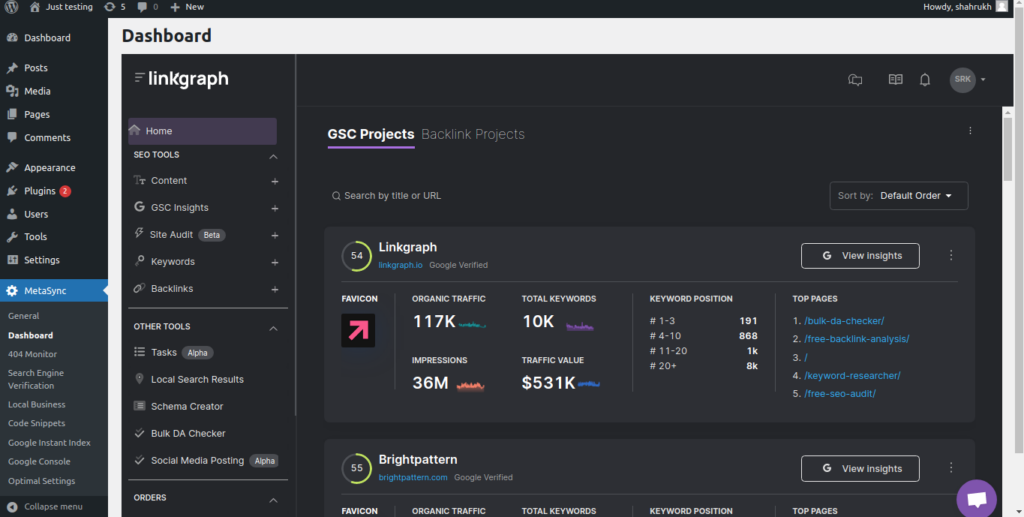
Search Atlas is an all-in-one SEO platform that combines essential tools with advanced AI. From comprehensive site audits and rapid content generation to resolving technical issues, building backlinks, optimizing local SEO strategies, and more, it has basically everything.
The plugin integrates your WP with Search Atlas’ integrated AI content creator, turning the content creation process into a seamless system.
From planning your content calendar to conducting keyword research and producing high-quality blogs, landing pages, product descriptions, and more.
With features like one-click publishing, bulk meta updates, and schema markup, Search Atlas empowers website owners to streamline their SEO efforts, attract more traffic, and consistently stay ahead of competitors in the ever-evolving search landscape.

OTTO is the market’s first AI agent, revolutionizing SEO by analyzing your Google Search Console (GSC), Google Business Profile (GBP), and website data to craft content tailored perfectly to your strategy and clients’ needs.
In just a few clicks, OTTO creates fully SEO-optimized content and publishes it directly to your WordPress site. It doesn’t just automate publishing, it automates strategy, writing, optimization, and everything in between.
Popular features
- All-in-One Tools: Avoid the hassle of installing multiple plugins—everything you need is built into the platform.
- 1-Click Publishing: Publish content, including blogs, updates, and landing pages, directly from the LinkGraph dashboard to your WordPress site.
- Optimized Metadata: Automatically includes meta descriptions and meta titles tailored for SEO best practices.
- Structured Content Formatting: Publishes content with header tags, bullet points, hyperlinks, and image alt text.
- Google Instant Indexing: Expedite your content’s appearance in search results with Google Instant Indexing capabilities.
- 404 Error Monitoring: Identify and address broken links or missing pages to maintain site integrity.
- Local Business SEO: Optimize your site for local search visibility and improve rankings in your target area.
- Redirections Management: Set up and manage redirects to ensure smooth user experience and preserve SEO value.
- Error Logs: Track technical errors and resolve issues promptly to keep your site running efficiently.
- Optimal Settings: Pre-configured SEO settings to align your site with search engine best practices.
Limitations
- Users recommend managing AI settings before enabling OTTO if you have a large number of content to publish or optimize
- Third-party platform integrations might be lacking, but Search Atlas consolidates nearly all essential features within its own platform.
Pricing
| Starter plan | Growth plan | Pro plan | |
| Price | $99/month | $199/month | $399/month |
| Free OTTO activation | 1 | 1 | 3 |
| User seats | 2 | 3 | 5 |
| GSC Site Projects | 5 | 15 | Unlimited |
| Articles Created | 40 | 100 | 200 |
| Full Article Generation | 30 | 60 | 90 |
| Regular AI Quota | 100 | 250 | 99999 |
| Content Assistant Keywords | 120 | 300 | 600 |
| Onpage In-Depth Audits | 40 | 100 | 200 |
| Content Plans | 40 | 100 | 200 |
Search Atlas reviews
- WordPress: 5/5 (2)
2. Schema Pro
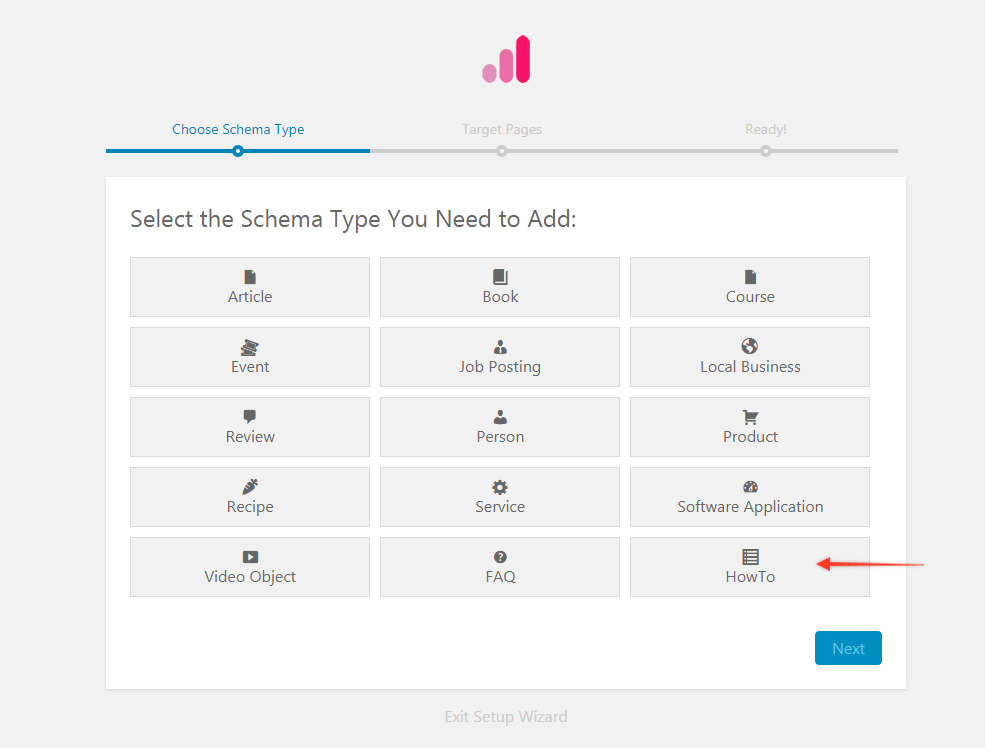
Schema Pro is a WordPress plugin designed to simplify the process of adding Schema Markup to your website.
Schema Markup provides search engines with additional information about a page, making it easier for them to display rich results in search engine results pages (SERPs).
While implementing Schema can be complex, Schema Pro eliminates the need for coding by offering a user-friendly interface. You can manually add Schema or allow the plugin to automatically apply it across your site based on your settings.
Popular features
- Schema Markup Types: Implement all major Schema types including book, article, recipe, event, product, and more.
- Automated Schema Markup: Automatically map fields and apply Schema Markup across your entire site, saving time.
- Custom Field Mapping: Easily overwrite default data for more precise control over your Schema Markup.
- Field Validation: Validate your Schema Markup in real time with Google’s Structured Data Testing tool.
- No-Code Configuration: Set up Schema Markup without needing to write any code.
- Rich Snippet Ranking: Enhance visibility in search results by optimizing your site for rich snippets.
Limitations
- It’s only use is for implementing Schema Markup
- Still need to use other plugins for SEO optimization
Pricing
- Annual Plan: $69
- Lifetime Plan: $229
Reviews
- WordPress: No reviews
3. All in One SEO for WordPress (AIOSEO)
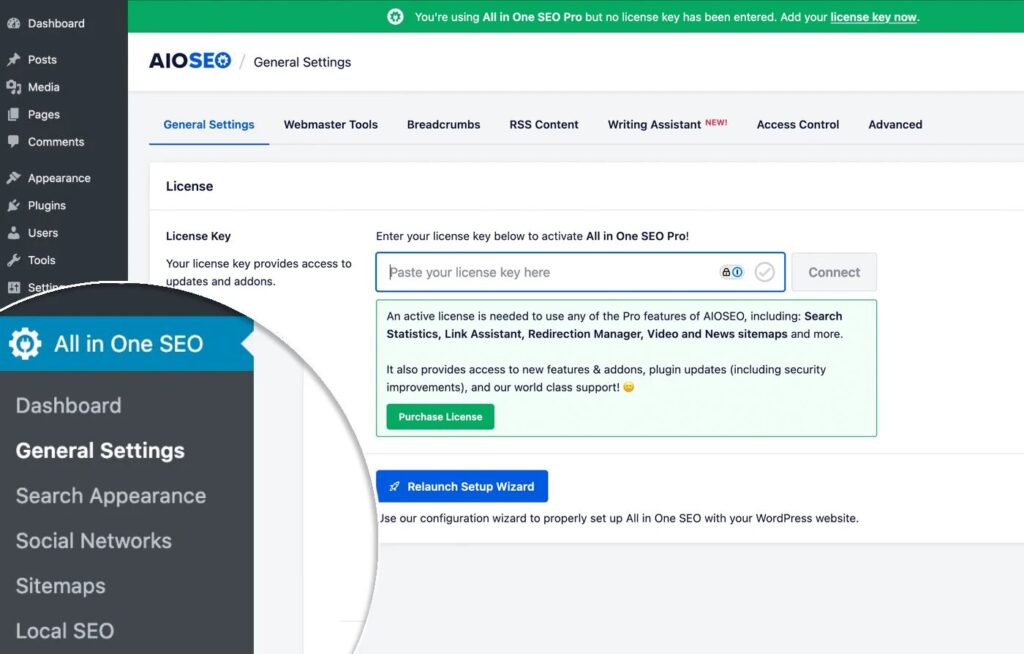
AIOSEO (All in One SEO) for WordPress is a widely used SEO plugin designed to simplify optimizing content and improving search rankings.
The plugin integrates with WordPress to offer tools like TruSEO on-page analysis, which provides a checklist for optimizing your posts and pages.
It includes dynamic features for creating SEO-friendly meta titles and descriptions. AIOSEO also helps WordPress users enhance their content by supporting author bios for improved Experience, Expertise, Authoritativeness, and Trust (E-E-A-T) guidelines and adding rich snippet schema markup.
For those looking to scale their SEO efforts, the pro version provides additional features for competitive advantage, such as advanced XML sitemaps and schema generation.
Popular features
- TruSEO On-Page Analysis: Provides actionable insights and a checklist to optimize your posts and pages for better rankings.
- Meta Tag Generator: Allows the use of dynamic values for SEO titles and meta descriptions, eliminating the need for manual updates.
- Author SEO Features: Enhances author bios to improve content trustworthiness.
- Rich Snippet Schema Markup: Helps add structured data to your content for displaying rich snippets in search results.
- Smart XML Sitemaps: Automatically generates XML sitemaps with advanced controls to enhance site visibility.
- SEO Health Check: Monitors the health of your website’s SEO performance and provides insights for improvements.
Limitations
- Reviews say the user experience is clunky
- Users report some relevant features are locked behind paid plans
Pricing
- Basic Plan: $49.60/year – 1 site, basic SEO tools
- Plus Plan: $99.60/year – 3 sites, advanced SEO tools and localSEO
- Pro Plan: $174.65/year – 10 sites, SEO optimization, advanced sitemaps, redirection manager, internal link assistant
- Elite Plan: $224.70/year – 100 sites, SEO master tools, search insights, management and scalability
Reviews
- WordPress: 4.7/5 (4,550)
4. SEOPress
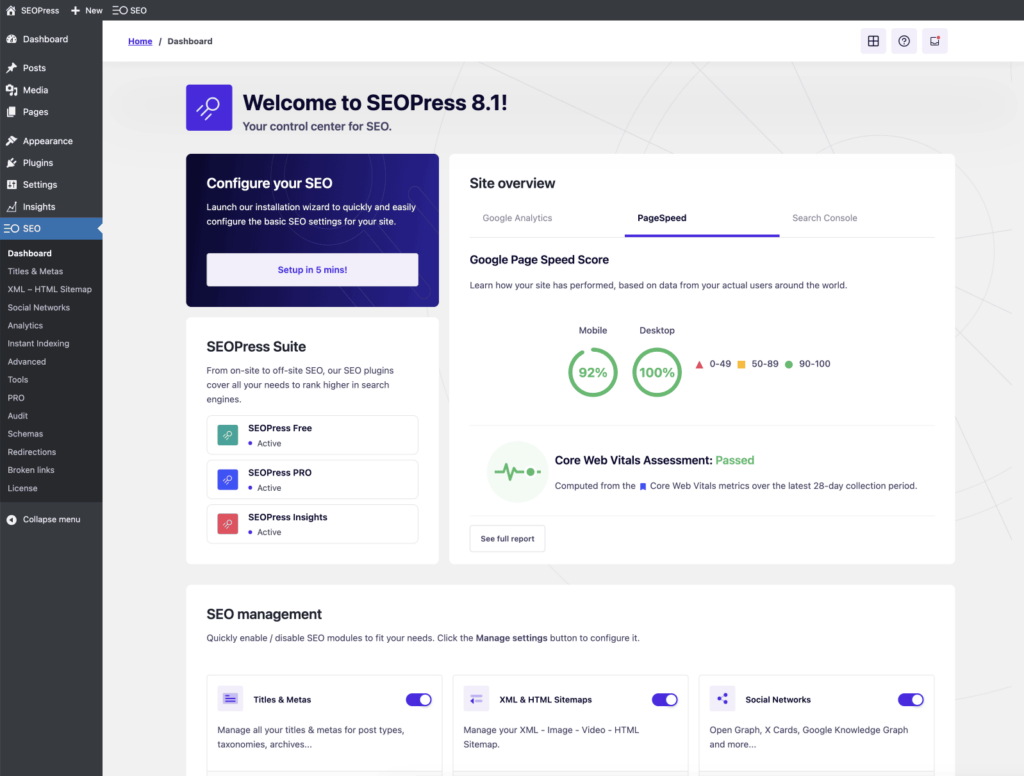
SEOPress is a robust WordPress SEO plugin that helps manage on-page optimization, traffic analysis, social media sharing, and technical SEO.
It integrates smoothly with popular page builders like the WordPress block editor and Divi Builder, allowing easy management of SEO titles, meta descriptions, and Schema Markups.
SEOPress also features Google Analytics integration to track site traffic and performance across different dimensions such as author or category.
The free version includes essential tools like meta management, sitemaps, and Open Graph tags, while premium upgrades offer advanced features such as schema markups and AI-powered text generation for enhanced optimization.
Popular features
- Unlimited Keywords: Include multiple keywords for each post to enhance SEO coverage.
- Redirection Support: Manage 301 redirects for your WordPress site to maintain SEO value.
- AI Integration: The premium version uses AI to bulk-generate meta descriptions and titles for content.
- Technical WordPress SEO: Manage meta robots, canonical URLs, sitemaps, and trigger search engine pings for faster indexing.
- Content Analysis and Optimization: SEOPress analyzes posts and provides tips to improve SEO and ranking potential.
- Image SEO: Automatically generate image titles, alt text, captions, and descriptions based on filenames.
Limitations
- Some reported the AI generated content is really bad
- Reviews say some crucial features are only available in the premium version
Pricing
- Free Plan: $0 – 1 site, basic features
- Pro Plan: $49/year – 5 sites, advanced features
- Pro Plan Unlimited: $149/year – Unlimited sites, advanced features
Reviews
- WordPress: 4.8/5 (1,079)
5. The SEO Framework
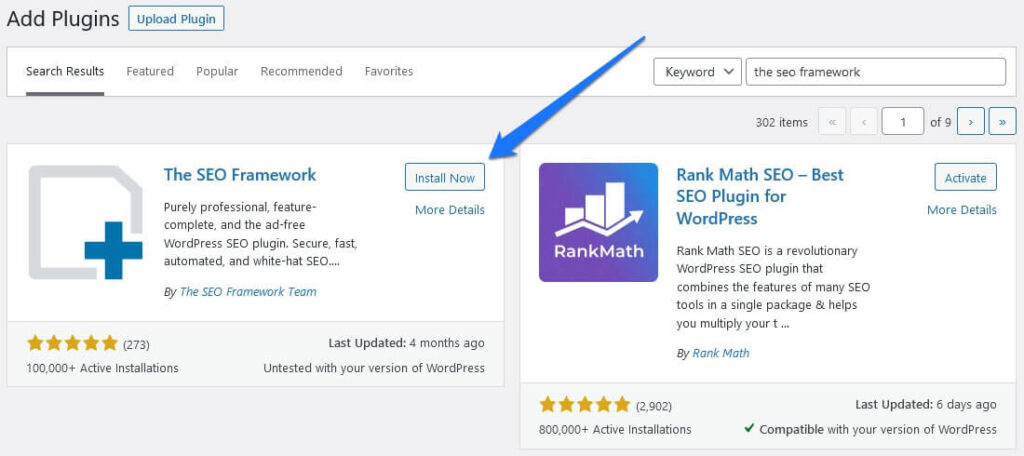
The SEO Framework is a fast and lightweight WordPress plugin designed to generate SEO meta tags in any language by analyzing your website.
It emphasizes performance, ensuring quicker loading times by avoiding unnecessary database bloat and slow queries.
With its focus on automation, speed, and security, the plugin helps users create SEO-friendly content without slowing down the site.
It includes essential SEO tools such as meta title and description editing, robots.txt management, structured data markup, and content analysis. Additionally, it leverages AI to automatically generate SEO meta tags based on your site’s content, saving valuable time.
Popular features
- Automatic Meta Tags Generation: Tailored SEO titles and meta descriptions are automatically generated based on your site’s environment, saving time for content creation.
- 70+ SEO Checks: Analyze your posts and pages against over 70 SEO issues, with actionable advice for improvement.
- Real-Time Caching: Reduce excessive load on your database through real-time caching mechanisms, improving performance.
- Technical WordPress SEO: It includes tools for editing meta titles and descriptions, canonical URLs, 301 redirects, robots.txt management, and more.
- SEO Bar: Check all your WordPress pages against 70+ issues and receive tips for SEO improvements.
Limitations
- You will have to get the premium version for certain features, such as article structured data
- Users say it’s missing some essential features, like rank tracking
Pricing
- Free Plan: $0 – 1 site, limited features, no API access
- Pro Plan: $7/month – 2 sites, 500 API requests monthly
- Business Plan: $17/month – 20 sites, 5,000 API requests monthly
- Agency Plan: $27/month – 200 sites, 50,000 API requests monthly
Reviews
- WordPress: 4.9/5 (357)
6. Rank Math
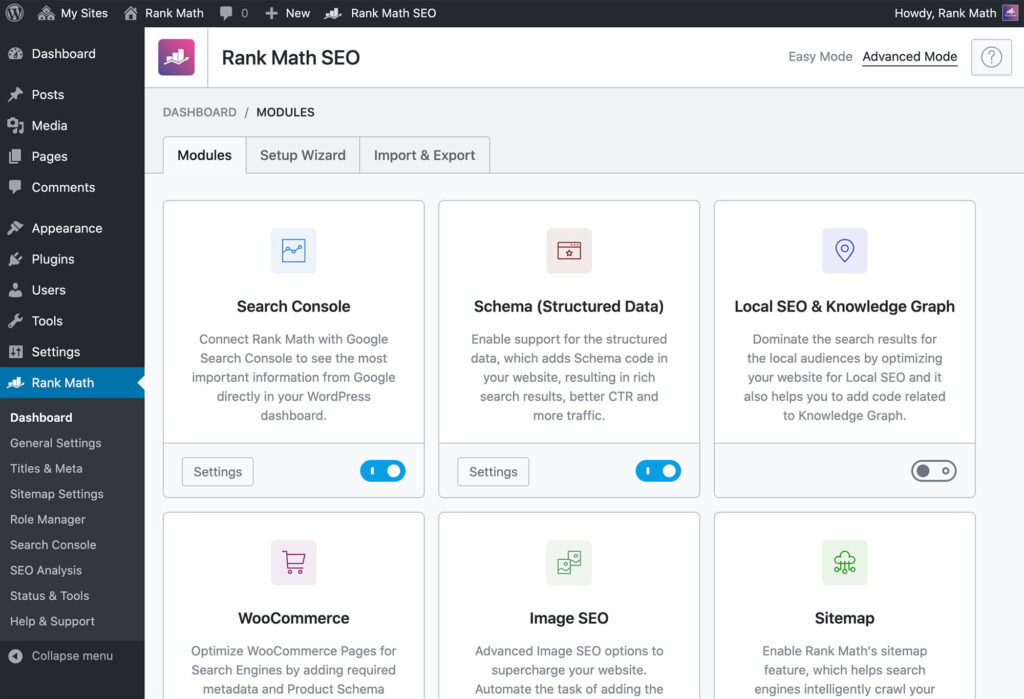
Rank Math is a comprehensive WordPress SEO plugin designed to help users optimize their sites for search engines and social media.
With its easy setup wizard, it allows seamless migration from other SEO plugins. It provides tools for adding meta titles, descriptions, and Open Graph metadata, and it generates XML sitemaps.
Users can connect to Google Search Console and manage plugin access by user roles. Rank Math offers automation features like an internal linking assistant and a content AI module, alongside advanced Schema markup, local SEO optimization, and WooCommerce optimization, making it a robust all-in-one SEO solution.
Popular features
- WAI Keyword Research: Provides keyword suggestions, optimal word counts, headings, links, and media recommendations.
- RankBot: Uses AI to assist in improving content quality with content-related queries.
- Pages and Posts Scoring: Evaluates posts and pages using 40 different SEO factors, including keyword density and meta descriptions.
- Schema Generator: Adds structured data to posts, imports Schema from other sites, and validates using Google’s Rich Results tool.
- Content AI: Generates AI-powered suggestions to optimize WordPress content for SEO.
- SEO Analytics Module: Integrates Google Search Console data to analyze SEO performance within WordPress.
Limitations
- Some say it gets really expensive if you do a lot of keyword research
- Higher learning curve than alternatives
Pricing
- Free Plan: $0 – Limited features
- Pro Plan: $6.99/month – Unlimited personal websites, tracks 500 keywords, 5k AI content credits
- Business Plan: $20.99/month – 100 client websites, tracks 10k keywords, 12k AI content credits
- Agency Plan: $49.99/month – 500 client websites, tracks 50k keywords, 30k AI content credits
Reviews
- WordPress: 4.9/5 (6,922)
7. Link Whisper
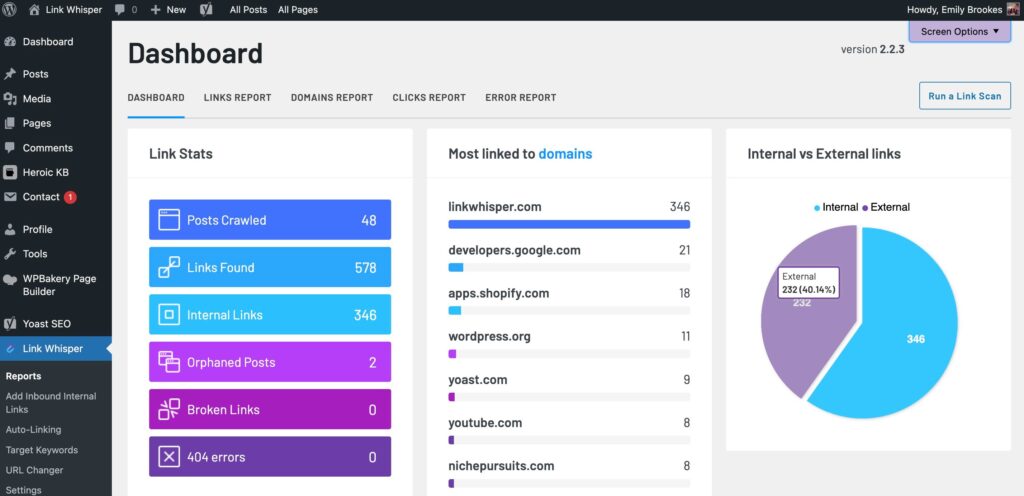
Link Whisper is a WordPress plugin designed to help improve internal linking within a site by offering automatic, contextually relevant link suggestions as you write content.
It simplifies the process of building a strong internal link structure, which helps improve the flow of link equity and can positively impact SEO. The plugin also identifies pages with few or no internal links, making it easier to address potential SEO issues.
While the premium version offers more robust features, the free version is quite limited and includes ads, offering a less comprehensive experience.
Popular features
- Link Suggestions: Get automatic internal link suggestions while writing content in WordPress.
- Orphaned Content Finder: Quickly identify and add internal links to pages with little to no links pointing to them.
- Auto-Linking: Set up automatic linking for target keywords across all posts where they appear.
- Relevant Linking Suggestions: Provides contextual link recommendations that enhance site navigation and SEO.
- Improves Site Structure Understanding: Helps search engines better understand your site structure, potentially improving rankings.
Limitations
- Limited to internal linking features; requires additional SEO plugins
- Reviews indicate the free version lacks essential features
Pricing
- 1 Site License: $97/annually
- 3 Site License: $167/annually
- 10 Site License: $217/annually
Reviews
- WordPress: 4.3/5 (96)
8. Ahrefs SEO
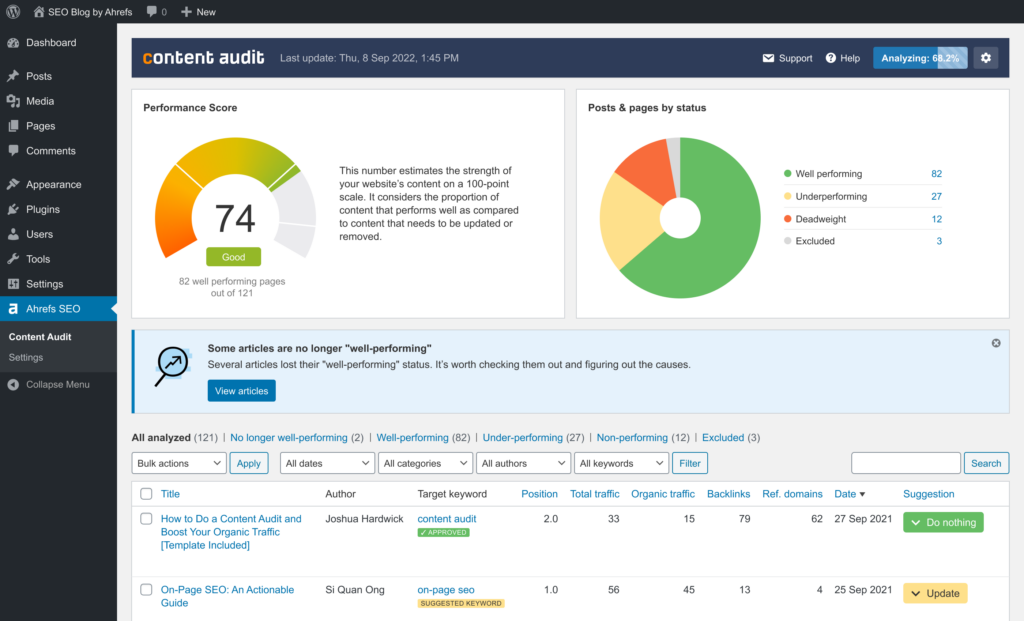
The Ahrefs SEO WP plugin integrates the Ahrefs SEO tool directly into WordPress, allowing website owners to track and optimize their content for specific target keywords.
By pulling data from Ahrefs, Google Analytics, and Google Search Console, it provides actionable suggestions on improving article performance.
The plugin automates content audits, helping users identify and enhance underperforming pages, and offers insights on keyword rankings, backlinks, and content gaps.
This integration simplifies ongoing SEO work, highlighting areas that need attention to boost organic traffic and improve search rankings without the need for extensive manual analysis.
Popular features
- Content Audit: Regularly conducts audits of your website’s content, offering suggestions for improvement based on Ahrefs, GA, and GSC data.
- Performance Score: Categorizes pages into performance buckets and calculates an overall site performance score to guide optimization efforts.
- Integration with GSC and GA: Uses Google Analytics and Google Search Console data to offer tailored keyword recommendations and actionable steps.
- Integration with Other SEO Plugins: Automatically imports target keywords from Yoast, RankMath, or AIOSEO, eliminating the need for manual entry.
- Easy Setup: Features a simple three-step configuration process to get started quickly.
Limitations
- Users say it’s incomplete and provides very inaccurate analysis
- Reviews say it forces you to connect and use GA4 and GSC data
Pricing
- Lite Plan: $129 monthly – 5 projects, 6 months of history, 750 tracked keywords, 50 keyword lists, 100,000 crawl credits, 25,000 max pages per project
- Standard Plan: $249 monthly – 20 projects, 2 years of history, 2,000 tracked keywords, 100 keyword lists, 500,000 crawl credits, 50,000 max pages per project
- Advanced Plan: $449 monthly – 50 projects, 5 years of history, 5,000 tracked keywords, 200 keyword lists, 1.5M crawl credits, 250,000 max pages per project
- Enterprise Plan: $14,990 yearly – 100 projects, unlimited history, 10,000 tracked keywords, 500 keyword lists, 5M crawl credits, 5M max pages per project
Reviews
- WordPress: 2.8/5 (34)
9. Semrush SEO Writing Assistant
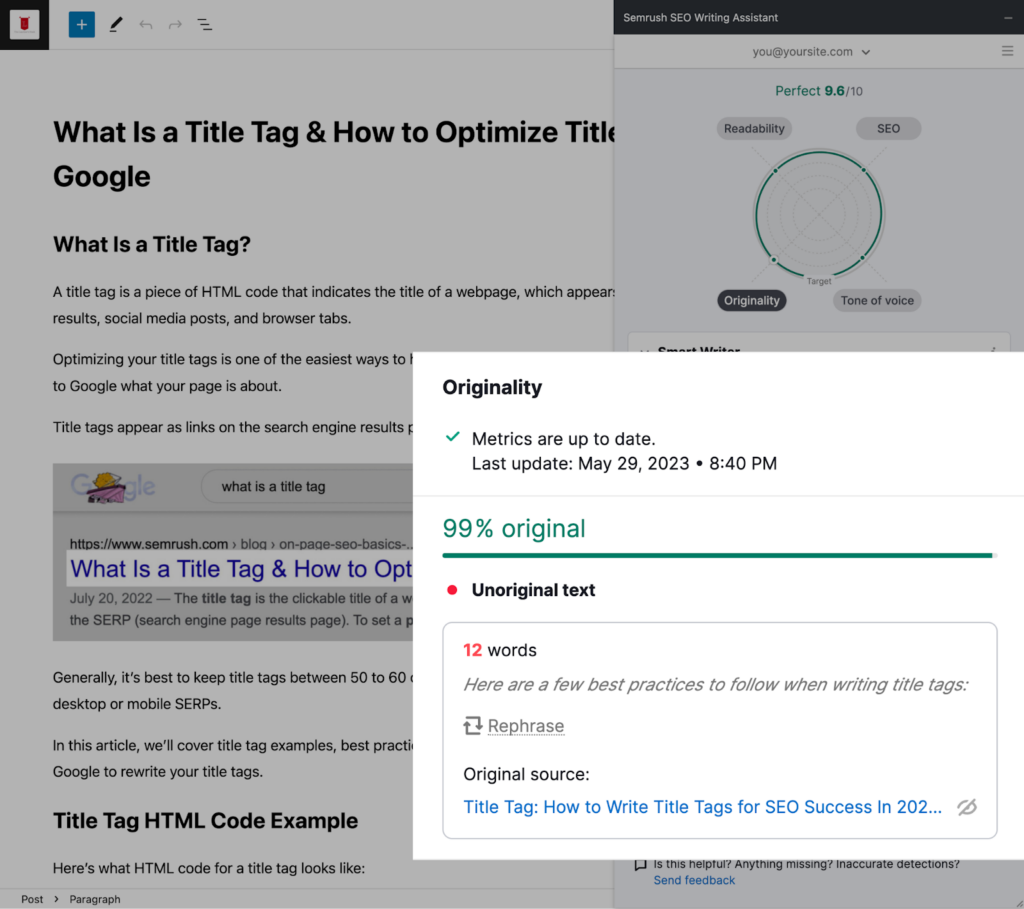
Semrush’s SEO Writing Assistant plugin for WordPress helps optimize content for both readers and search engines.
It evaluates content based on readability, tone, originality, and SEO, offering suggestions for improvement. For example, it can highlight missing target keywords in your title and recommend adding them for better optimization.
The plugin integrates with AIOSEO, allowing you to find related keyphrases and view their search volume directly in WordPress. Semrush also provides SEO templates and advanced recommendations to enhance your content’s ranking potential and improve its visibility in search engines.
Popular features
- Readability: Use the Flesch-Kincaid score to assess and improve your text’s readability for better user engagement.
- Recommended Keywords: Receive semantically related keyword suggestions to help improve your content’s search visibility.
- Tone of Voice: Ensure consistency and smoothness in your content’s tone for better user experience.
- Plagiarism Check: Verify the originality of your content to avoid penalties for duplicate content.
- Rephraser: Rework text to enhance quality, target different audiences, or overcome writer’s block.
- Overall Score: Evaluate your content’s SEO potential with an overall score based on key on-page factors.
Limitations
- Users report insanely high pricing, even for enterprise-level businesses
- Multiple users have encountered bugs and functionality issues
Pricing
- Pro Plan: $139.95 per month, 5 projects, track up to 500 keywords, and check up to 10,000 results per report.
- Guru Plan: $249.95 per month, 15 projects, tracking up to 1500 keywords, and checking up to 30,000 results per report.
- Business Plan: $499.95 per month, 40 projects, tracking up to 5000 keywords, and checking up to 50,000 results per report.
Reviews
- WordPress: 2.9/5 (26)
10. Yoast SEO
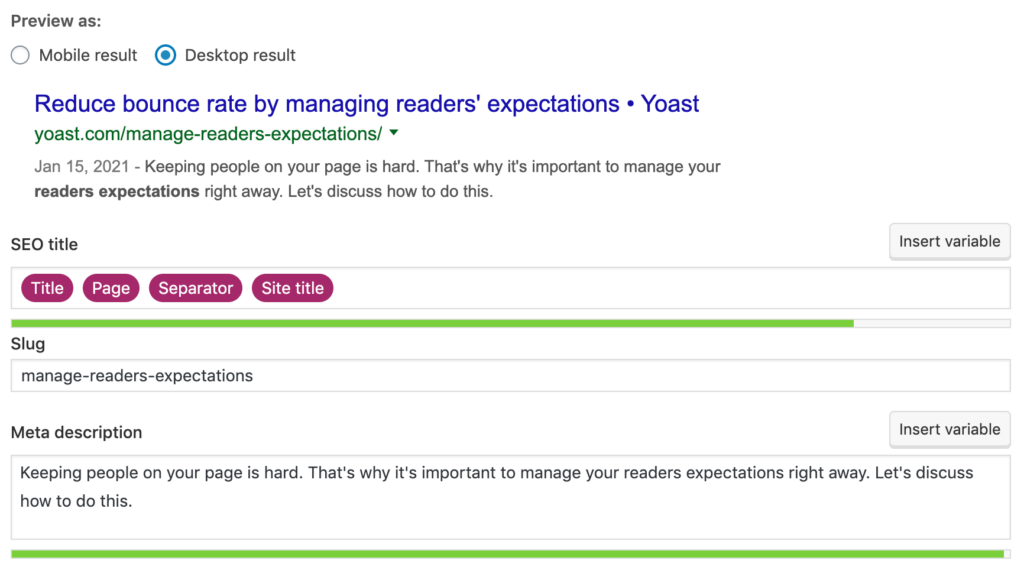
Yoast SEO is a widely used WordPress plugin designed to optimize websites for search engines. It enables users to add SEO titles and descriptions to posts and pages while also offering Open Graph metadata and social media image integration.
The plugin automatically generates an XML sitemap to assist search engines in crawling the site. Yoast SEO also allows users to import SEO data from other plugins.
Additional features include readability analysis, social media previews, and Google previews, all aimed at improving user experience and search engine visibility while maintaining faster site load times.
Popular features
- Readability Analysis: Evaluate your content’s readability with actionable feedback using a traffic light system.
- Schema Integration: Choose from various schema types to add structured data markup to your WordPress site.
- Internal Linking Suggestions: Get automatic suggestions for internal links within your content to enhance site structure.
- Content Optimization Tools: Optimize WordPress posts for target keywords with SEO analysis and suggestions directly in the editor.
- Technical SEO: Implement automated technical SEO improvements with the Yoast plugin for better search engine performance with easy to use meta tag optimization features.
- Sitemaps: Automatically generate XML sitemaps and submit them to Google to assist with indexing and crawling.
Limitations
- Some users claim it hasn’t kept pace with modern SEO strategies
- Reviews mention a negative impact on website loading speed
Pricing
- Yoast SEO Free Plan: $0 – Basic SEO features
- Yoast SEO Premium Plan: $99/yearly – AI suggestions, optimize 5 keyword synonyms, automatic redirects, internal links suggestions,
- All Yoast Plugins Plan: $229/yearly – Yoast SEO premium features, WooCommerce, local SEO, news SEO, and video SEO plugins
Reviews
- WordPress: 4.8/5 (27,746)
11. Frase
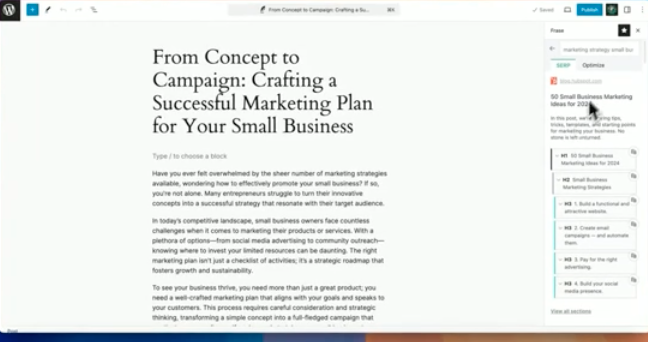
The Frase WP plugin is designed to streamline content creation and optimization directly within WordPress. It assists users by providing SERP analysis, keyword insights, and real-time SEO scoring for each post.
Once the plugin is set up, users input their target keyword, and Frase analyzes the search results to recommend optimal word counts, relevant topics, and other SEO elements. It generates a content brief powered by AI, which can be accessed in Frase’s content editor or directly in WordPress.
Popular features
- WordPress Site Audits: Perform audits on your WordPress site to identify and fix SEO issues.
- Keyword Research: Discover new keywords to target and track your rankings within WordPress.
- Content Submission: Automatically submit your WordPress content across search engines, directories, and business listings.
- Analytics: Analyze SEO competitors, traffic, backlinks, and other important metrics.
- Content Optimization: Optimize content before publishing directly in WordPress to enhance SEO performance.
- AI Writing Tool: Use the integrated AI writing tool to create blog posts and pages quickly while improving content quality.
Limitations
- Only used for content optimization, no technical SEO, keyword research, etc
- Unlimited queries only included in the expensive Team plan
Pricing
- Free Trial: $0 – 1 user, 1 SEO document, 10k AI words
- Solo Plan: $15/month – 1 user, 4 SEO documents monthly, 20k AI words
- Basic Plan: $45/month – 1 user, 30 SEO documents monthly, unlimited AI words
- Team Plan: $115/month – 3 users, unlimited SEO documents monthly, unlimited AI words
- Enterprise Plan: Custom pricing and features
Reviews
- WordPress: 5/5 (2)
12. Surfer SEO
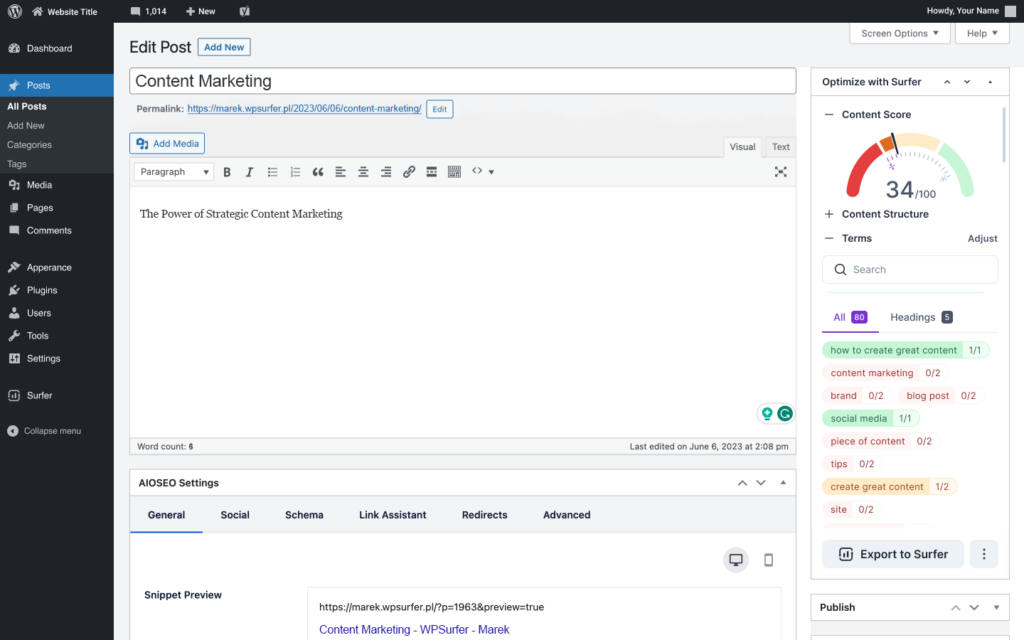
Surfer SEO is a WordPress plugin that optimizes content based on real-time analysis of top-ranking pages for your target keyword.
It examines the SERPs to identify common elements across high-ranking content and provides personalized SEO recommendations to help improve your posts.
As you write, Surfer scores your content and compares it with competitors’ scores, offering valuable insights on areas for improvement.
Popular features
- Content Editor: Get real-time SEO scoring and suggestions while writing, with AI assistance for better optimization.
- WordPress Plugin: Seamlessly optimize your content directly within the WordPress editor.
- Surfer AI: Generate fully optimized articles for posting on WordPress with minimal effort.
- Keyword Research: Discover new keywords and create SEO-ready content briefs with a few clicks.
- Audit: Analyze and optimize existing WordPress blog posts and pages for improved SEO performance.
- Easy Sharing: Share Surfer-generated content briefs with writers to streamline collaboration and content creation.
Limitations
- No technical SEO features
- Low usage allowances on most plans
Pricing
- Essential Plan: $99/month – 200 pages tracked, 30 articles to write and optimize, 5 AI articles, 5 users seat
- Scale Plan: $219/month – 1000 pages tracked, 100 articles to write and optimize, 20 AI articles, 10 user seats, 100 SERPs analysis daily, onboarding call
- Enterprise Plan: Custom pricing – custom limits with API access, white-labeling, SEO advisory, and rank tracker
Reviews
- WordPress: 4.7/5 (10)
Stop Installing Multiple WordPress SEO Tools and Making a Mess On Your Website
Juggling between multiple tools and plugins can often create more problems than solutions, leading to frustration and wasted time.
Many plugins promise optimization but fail to truly connect to the core SEO tools you need or integrate seamlessly with your website.
That’s where Search Atlas stands out—it allows you to publish content and make key optimizations with just one click. 🖱️
With OTTO, we take this a step further by automating strategizing, writing, optimization, monitoring, and more, acting as a true AI-driven agent.
Stop wasting valuable resources on plugins that cause headaches. Try Search Atlas for free and simplify your SEO efforts today!


